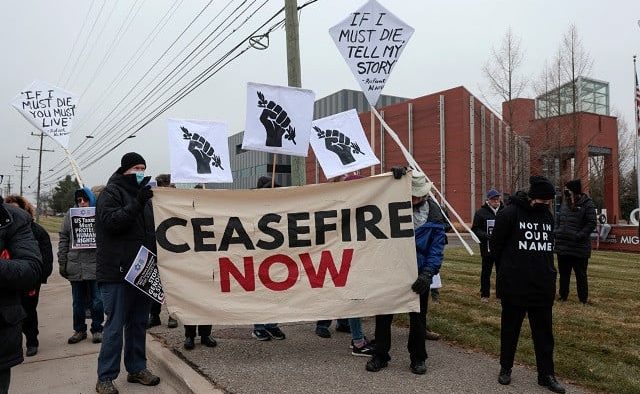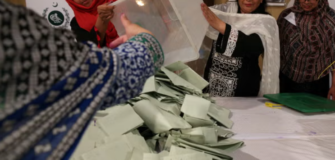A 135-day Gaza truce with an end to Israeli departure is what Hamas demands

A ceasefire plan put out by Hamas would quiet the guns in Gaza for four and a half months, allowing Israel to remove its soldiers from the Gaza Strip, free all hostages, and negotiate an end to the conflict.
The proposal made by the resistance organization in response to an offer made last week by mediators from Qatar and Egypt represents the most diplomatic drive to yet for a protracted cessation of hostilities and was welcomed with relief and hope in the Gaza Strip.
Israel did not immediately issue a statement to the public, despite its stated intention to remain in Gaza until Hamas is destroyed.
The Hamas counterproposal calls for three 45-day phases of a truce, according a draft paper obtained by Reuters. Palestinian captives will be traded for the remaining Israeli hostages that were taken on October 7. Gaza would start to be rebuilt, Israeli forces would leave the area entirely, and bodies and remains would be swapped.
After meeting with the presidents of Qatar and Egypt, two countries acting as mediators in an effort to achieve an extended ceasefire, US Secretary of State Antony Blinken spent the night in Israel.
According to a person with knowledge of the negotiations, the Hamas counterproposal did not call for an upfront assurance of a permanent ceasefire, but it did stipulate that a ceasefire would need to be agreed upon during the truce in order to release the last detainees.
The paper said that in exchange for the release of Palestinian women and children from Israeli jails, all Israeli women hostages, males under the age of 19, the elderly, and the sick would be released during the first 45 days of the agreement. During the initial phase, Israel would also remove its forces from populous areas.
The parties would have to finish “indirect talks over the requirements needed to end the mutual military operations and return to complete calm” before the second phase could be put into action.
“The withdrawal of Israeli forces outside the borders of all areas of the Gaza Strip” and the release of the remaining male hostages would be the two primary components of the second phase.
The final stage would involve the swapping of bodies and remains. In addition, more food and other supplies would be sent to Gaza’s beleaguered residents during the truce, who are suffering from severe food shortages and other necessities.
The father of four, Yamen Hamad, lives in a U.N. school in Deir Al-Balah in the central Gaza Strip. “People are optimistic, at the same time they pray that this hope turns into a real agreement that will end the war,” Hamad said.
Through a messaging app, he told Reuters, “People are hopeful despite the ongoing bombardment, they are waiting for news of a ceasefire.”
At least 27,585 Palestinians have been killed by Israel’s ruthless military campaign, and many more are thought to be buried under the debris.
Israel launched its most recent war on Gazans in retaliation for the long-running atrocities committed by Israeli settler colonists. On October 7, 2023, Hamas resistance fighters launched a raid into Israeli-occupied territory, killing 1,200 people and capturing 253 hostages. The only ceasefire thus far ended at the end of November after just one week.
Blinked at the sight of Netanyahu
Later on Wednesday, Blinken will speak with Israeli Prime Minister Benjamin Netanyahu about the Hamas counterproposal.
The truce and hostage agreement have been portrayed by Washington as components of a larger Middle East conflict resolution strategy that will eventually result in peace between Israel and its Arab neighbors as well as the establishment of a Palestinian state.
At a press conference in Doha late on Tuesday, Blinken declared, “We will be working as hard as we possibly can to try to get an agreement so that we can move forward with – not only a renewed but expanded agreement on hostages – and all the benefits that that would bring with it.”
Netanyahu has refused to acknowledge the creation of a Palestinian state, which Saudi Arabia, Israel’s greatest ally in its pursuit of recognition from its neighbors in the Middle East, claims is a prerequisite for any agreement to normalize relations with Israel.
The diplomatic effort coincides with fierce fighting in Gaza, where Israel is attempting to take control of Khan Younis, the enclave’s major city, while fighting is also reemerging in northern areas that Israel had previously declared to be under its control.
Israel declared last week that it intended to overrun Rafah, the town along the southern border fence of Gaza, which is currently teeming with people, the majority of whom are taking refuge in public buildings and temporary tents.
Some of the displaced residents in Rafah became alarmed upon hearing that 11 people had died in Israeli strikes on the town overnight, fearing that this could be the beginning of an Israeli assault on the area, according to health professionals in Rafah.
In the last 24 hours, the Israeli military claimed to have killed dozens of “militants” in combat. Throughout the war in Khan Younis, it has made similar assertions that have never been independently confirmed.

I am a dedicated student currently in my seventh semester, pursuing a degree in International Relations. Alongside my academic pursuits, I am actively engaged in the professional field as a content writer at the Rangeinn website.








